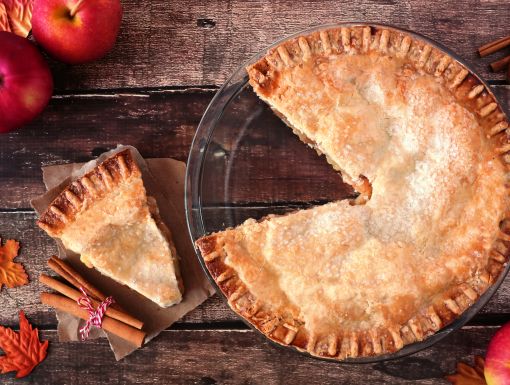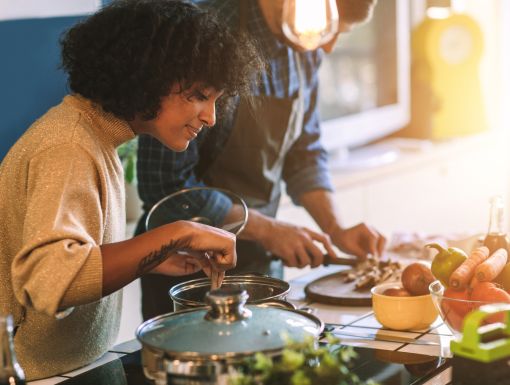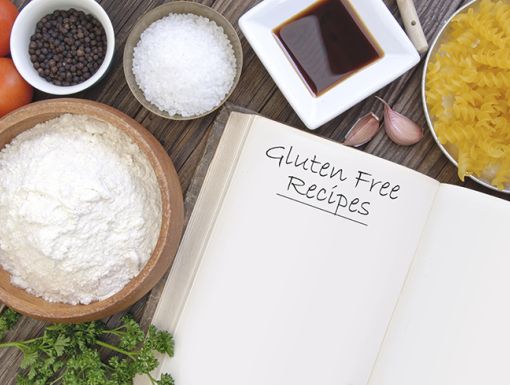
3 Tips for Making Healthful, Low-Carb Bread at Home
If you're trying to incorporate keto or low-carb breads into your baking routine, we're sharing tips from Carolyn Ketchum, cookbook author and founder of the blog All Day I Dream About Food, on low-carb and gluten-free ingredient options for baking healthful bread.
Below is a rundown of Carolyn’s strategies for making homemade bread that is truly delicious and still nutritious, along with links to some of my favorite recipes that she’s created.
What ingredients do you need to bake low-carb bread?
- Alternative flours. There’s nothing wrong with using a variety of whole-grain flours, but when you’re looking to really maximize nutrition, flours like almond flour and coconut flour are lower in carbs and are naturally gluten-free, plus they’re also richer in protein, fiber and plant-based fats. Carolyn has incredible tutorials on her blog about baking with almond flour and coconut flour.
- Unflavored protein powder (plant-based or whey). Not only does it help to make breads lighter and fluffier, protein powder also serves as a gluten replacer, providing structure and texture to baked goods.
- Eggs. They contribute to the structure and height of baked goods, says Carolyn, and also helps to keep bread from falling apart. Don’t be alarmed by the number of eggs that a recipe calls for; your bread won’t turn out “egg-y.”
- Fat. You’ll see that pretty much all recipes made with alternative flour will also call for some type of fat, often coconut oil, butter or avocado oil.
- Psyllium husk powder. Yes, it’s the same stuff in Metamucil. Psyllium husk powder is rich in soluble fiber, giving products a more bread-like texture. Don’t use too much, cautions Carolyn, or it can get gummy.
- Baking powder or baking soda. Because most breads made with alternative flours tend to be “quick bread” style and are not made with yeast, recipes typically call for baking powder or baking soda as a leavening agent.
3 pro tips for making low-carb bread
- Follow a recipe. There’s no need to experiment on your own, especially if you’re new to baking with gluten-free flours. Find a recipe that’s tried-and-true – one that’s been vetted out by friends and family, or one with plenty of positive online reviews.
- Be careful with substitutions. Don’t replace equal parts almond flour with coconut flour, or vice versa. And definitely don’t swap out wheat flour for these alternative flours without making significant adjustments to the recipe. Almond flour is a high-moisture flour with lots of natural oils, while coconut flour is very dry, soaking up any liquids like a sponge. They each behave in very different ways in baking, and therefore are not easily interchangeable.
- Turn lemons into lemonade (or lemon scones). Unless you’ve used salt in place or sugar, or sugar in place of salt, there are no un-salvageable mistakes in baking, says Carolyn. If a trial run of a new cake recipe turns out dry and crumbly, she says, use it for low-carb truffles or cake balls.
4 must-try low-carb bread recipes
Rosemary Olive Oil Focaccia that’s also good for you is now a reality, with this almond flour and coconut flour recipe. Carolyn also includes a video with this blog post to show us what the texture is supposed to look like. I’ve started keeping this focaccia on hand at all times, making a double batch so that I can freeze leftovers for a quick addition to any meal.
Flatbread Pizza Crust that also looks and tastes more like real pizza crust? The secret ingredient is shredded part-skim mozzarella as part of the base, along with coconut and/or almond flour. Carolyn has a video on her blog to show the exact steps; it’s surprisingly simple and incredibly delicious. This same dough recipe can also be used to create breadsticks, garlic parmesan knots and low-carb bagels.
Soul Bread is made with cream cheese and protein powder, resulting in light, fluffy sandwich-style buns and rolls.
Cheesy Skillet Bread has a bit more of a cornbread texture, thanks to the coconut flour and cast-iron skillet used to make it.
Want more low-carb baking ideas? Check out Carolyn Ketchum’s Blog, All Day I Dream About Food, and her latest book, The Ultimate Guide to Keto Baking.
To schedule a virtual nutrition consultation, email nutrition@ochsner.org.
Be inspired to live your strongest, healthiest life! Subscribe to Molly's podcast FUELED | wellness + nutrition for the latest trends and research related to your body and mind. And tune in to her weekly TV segment on WGNO for more wellness tips, including product spotlights, cooking segments and myth-busting.



